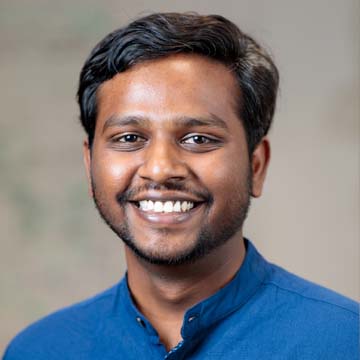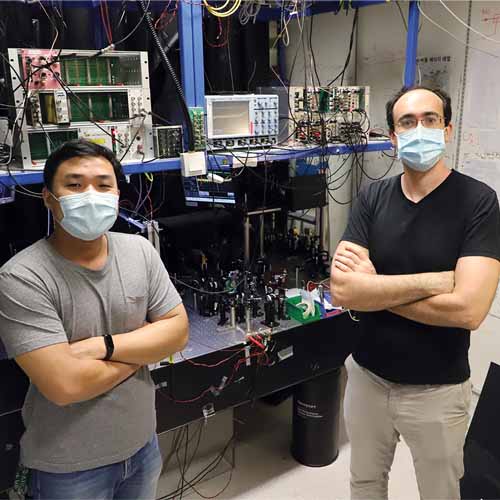Highlights
Meet a CQTian: Yeo Xi Jie
 Outside the lab, Xi Jie helps out in a peer mentorship programme and enjoys catch wrestling.
Outside the lab, Xi Jie helps out in a peer mentorship programme and enjoys catch wrestling.
For his undergraduate research at the Centre for Quantum Technologies (CQT) at NUS, Yeo Xi Jie has earned not only co-authorship of a scientific paper but also an international award. Xi Jie won the 2020 Global Undergraduate Award (Mathematics & Physics) in September, selected from among 4100 submissions in a judging process led by over 400 expert academics worldwide. He also earlier received the Outstanding Undergraduate Researcher Prize from NUS. His work on “Spectral Compression of Narrowband Single Photons with a Resonant Cavity” was published on 28 October in Physical Review Letters.
Over to Xi Jie to tell us more about himself, his research and interests…
Who are you?
I’m Xi Jie, a second year PhD student at the Centre for Quantum Technologies (CQT). I’ve been in CQT since I was a Year 2 undergraduate, working in the group of Christian Kurtsiefer. Previously in junior college, I had an attachment with CQT working with Rainer Dumke at Nanyang Technological University. That was the first time I stepped into a research lab.
Congratulations on winning the 2020 Global Undergraduate Award! Tell us a little bit about the work.
Thank you! The project was about the manipulating the spectrum of light emerging from a single-photon source. We worked on technologies to change the spectral properties of the individual photons such that they can potentially interact better with atoms. This could be useful in quantum information protocols and will help in building a future network between quantum computers.
Is this similar to work that you are doing now for your PhD?
Yes, because both projects are about designing technologies that could one day help us to establish a network of quantum computers to transfer information from one point to another. For my PhD, I am developing a light source that produces photon triplets from a cloud of cold Rubidium atoms. Photon triplets are three photons emitted from a source that when detected individually, are usually found close to each other in time. The spectral properties of these photons are also correlated.
Why photon triplets?
They are used in some proposals for quantum repeaters. One challenge of building a quantum network is finding ways to transmit quantum states over long distances, such as photons through fibre. As photons travel through fibre, they interact with the environment, which scrambles up the information encoded in their quantum states. To make matters worse, this scrambling increases exponentially with the length of the fibre. If we place quantum repeaters at nodes of a larger network, at each quantum repeater, the quantum states are ’cleaned up’ before going to the next node. It’s something like the way cell towers re-transmit information to extend the range of our phone signals.
What do you enjoy about research?
I enjoy being able to create something from scratch, from setting up the experiment to thinking about how the experimental setup can be improved or expanded to further ideas. The work we do seems to me very hands-on. There are lots of fun and creative ways to build up an experiment based on the small pieces or modules that you have. It is really like an advanced Lego set.
I think that being a scientist is a very creative thing. Everyone has a little bit of that in them. I think the spirit of scientific inquiry is important in all walks of life and important for society as a whole as well.
What was difficult about getting to where you are now?
We have to put a lot of time into honing the lab skills. Just like anything else, it takes countless repetitions to become efficient and to know what to watch out for when building something up. For example, we use optical fibres to flexibly bring light from one part of the setup to another, like a pipe. But getting the light into the fibre can be a challenge. You need to direct the light into the very narrow core of the fibre in a particular direction and focus. The act of fine-tuning this direction and focus is known as ‘coupling’. The first time I tried to couple light into an optical fibre, it took me almost a whole weekend. Now I would just need an hour or so to do the same task well.
We also need to be detail-oriented. For example, if I want a laser system to measure the movement of an object to the precision of nanometres, what are the parts and pieces I need? Answering these questions or knowing what questions to ask comes with experience. Being able to see how things come together in your head, and predict or guess the outcome of the experiment accurately helps in the idea generation. I believe it is what physicists like to call ‘physical intuition’.
What are you most proud of?
I think the proudest moment was after my convocation. I brought my parents to the lab and showed them what I was working on. The fun part was trying to explain to them concepts that people outside the community seldom come across.
I think it was clear to my parents quite early on that I was interested in physics. My dad was an electrician in the past, so we have a lot of electrical components floating around at home. I have always liked to tinker with them. Once when I was learning about electromagnets in primary four, I decided to make my own by coiling some wires around a hex key and connected it to some batteries! It was so exciting to actually learn about something by making it rather than just reading it from a textbook.
What do you do outside the lab?
As someone who loves physics, I think what engages me most outside the lab is still working on complex problems and trying to solve them with intuitive tools. For example, I help out in a peer mentorship programme called Conqueror’s Circle, held at the NUS Centre for Future-ready Graduates, by facilitating support groups. Participants can share about issues that have been bothering them in life lately and we try to work on the problem as a group.
For physical activity, I did a martial art/sport called Catch Wrestling before COVID, where one needs to nimbly manoeuvre their limbs to submit their opponents to a choke or pin. Sometimes one has to use misdirection on the opponent or adapt with a creative manoeuvre to get out of a situation. To me, it is the same as physics; there are boundaries set by the bodies of your opponent and yourself, and you need creative problem solving to get out of the situation.
Learn more
Related Stories
 | Meet a CQTian: Chetan Sriram Madasu November 05 2020 |
 | Match-making between photon and atom frequency could boost quantum network performance November 18 2020 |
From outstanding undergraduate researcher to CQT PhD student December 20 2019 |






